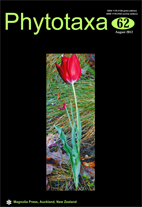Abstract
Herbaria contain many specimens for which identification to species and family is not up-to-date with current classifications. However, updated species names are essential as key information for publishing digitized specimen data on internet-based online resources such as Global Biodiversity Information Facility (GBIF; www.gbif.org). Keeping herbarium collections current relative to classification of species and families poses a particular challenge to herbarium staff. Especially, families with a dynamic record of repeated changes in generic classification, such as Orchidaceae, require much curatorial attention. We used the World Checklist of Selected Plant Families (WCL; apps.kew.org/wcsp/home.do) for rapid validation of current species names of specimens of Orchidaceae housed at the combined herbaria of the University of Zurich (Z) and the Swiss Federal Institute of Technology Zurich (ZT). In order to evaluate the possible type status of specimens, we consulted the original species description when the reviewed specimens were collected prior to the date of the publication. Within 600 hours of labour, we reviewed and updated species names for about 10,000 orchid specimens and located 280 previously unrecognized type specimens. Almost half of the type specimens located in the general collections represent species described by Rudolf Schlechter, Fritz Kraenzlin, and Rudolf Mansfeld, whose original material was destroyed in 1943 in the Herbarium Berolinense (B) and for which discovery at Z+ZT is therefore particularly valuable.

